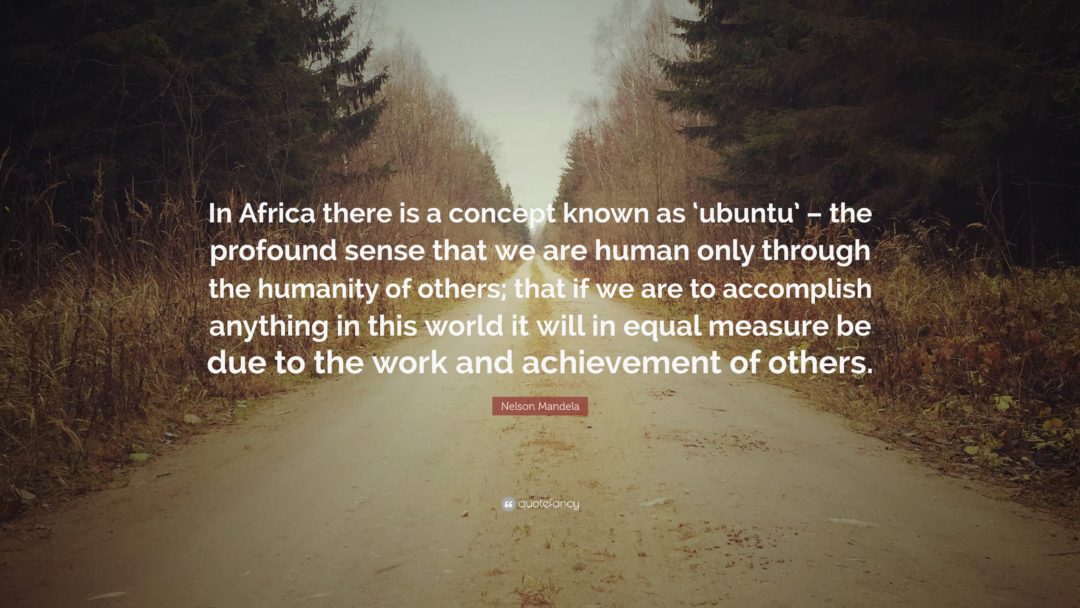What can leaders & members do to strengthen the impact of education networks?
I’ve framed this question with a focus upon the actions both leaders and members can take take to strengthen networks, because I believe one of the most central things a network leader should be to create a sense of ownership amongst participants for the strengthening of the wider network.
As we explored in the previous article, in many ways our own existence and growth is inseparable from that of others, so an individualistic approach to network membership may not achieve the results you aim for. It is also vitally important to realise that generating impact through a network takes active strategic input – networks do not often catalyse high level impact through simply bringing people together.
This podcast offers some wider reflection on how social movements can gain momentum. However, in this post I focus on very practical strategies for network engagement.
1. Generating a sense of belonging & ownership
As we explored, one of the most common things that members value in a network is feeling a sense of belonging. Therefore, leaders and participants need to explore ways to ensure that every individual is known and understood by other participants within the network. There are several ways of achieving this:
a) Profiling individuals and their work
Some examples of how EduSpots tries to achieve this are found below – we create weekly posters with quotes across the network and hold weekly interviews on our WhatsApp feed with volunteers, which are then edited and placed on our website and social feeds.



Ensuring wider social media engagement of the network is centred around members’ actions and their engagement with programmes, entering and elevating their voice in the process, can help instil an idea of the central positioning and priority of members within the focus of leaders of the network.
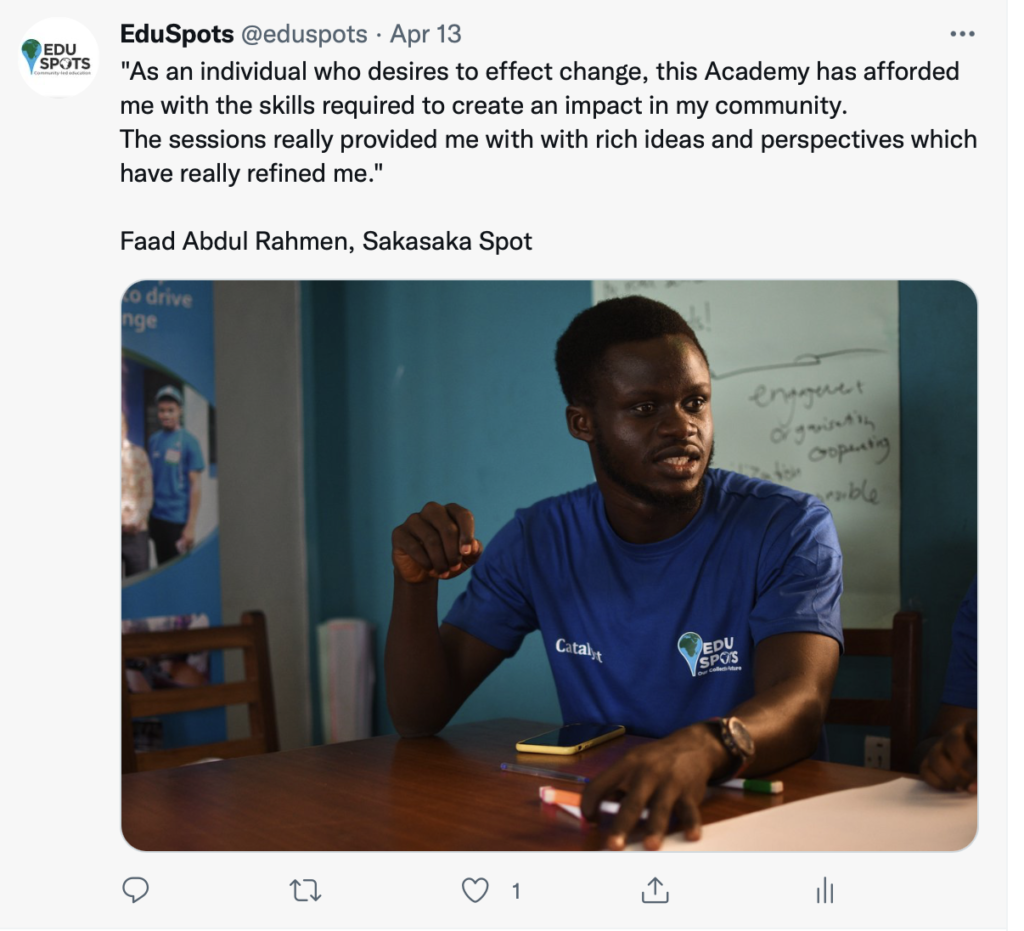
b) Nurturing local communication
A core part of EduSpots’ Community Leadership in Education programme is focused upon giving volunteers the skills to lead their own communication strategies.
We encourage our volunteers to set up their own local Spot social media pages, which we then reshare on our main feeds. This is a great way of directly showing our external audiences the work ongoing in our diverse communities, whilst also encouraging Spots to feel a sense of leadership and belonging in the network.
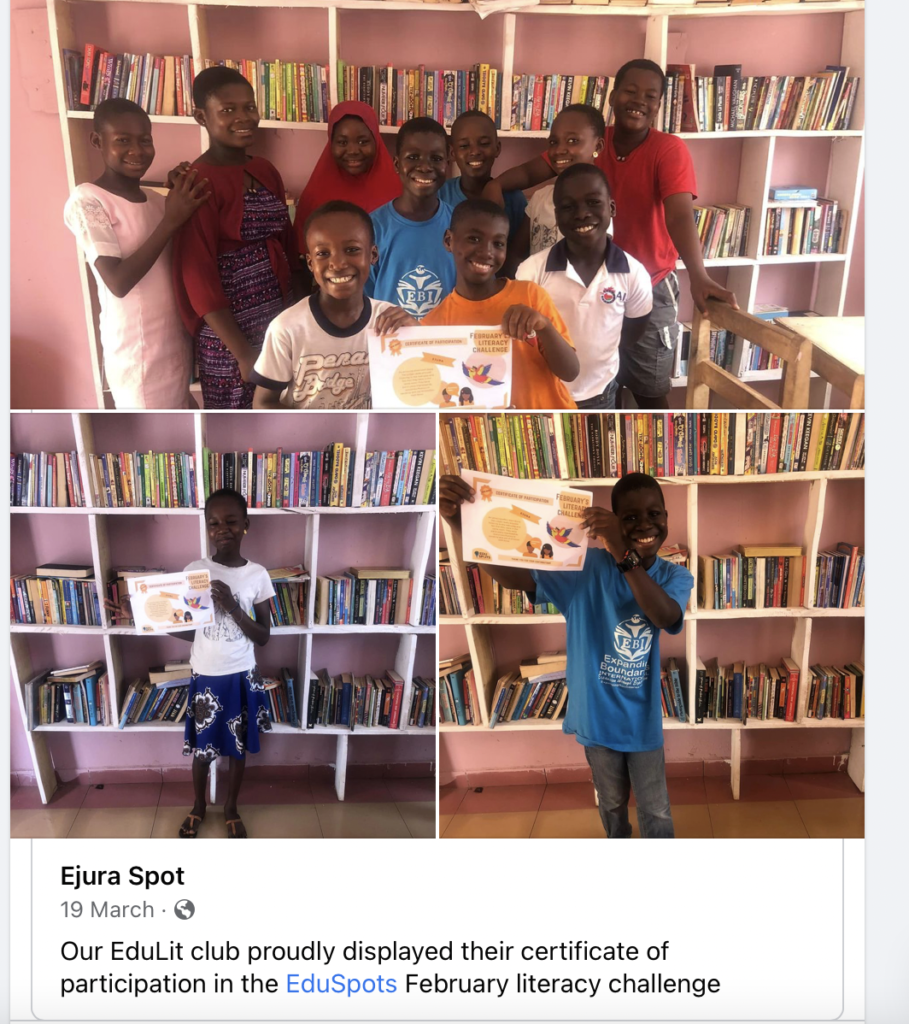
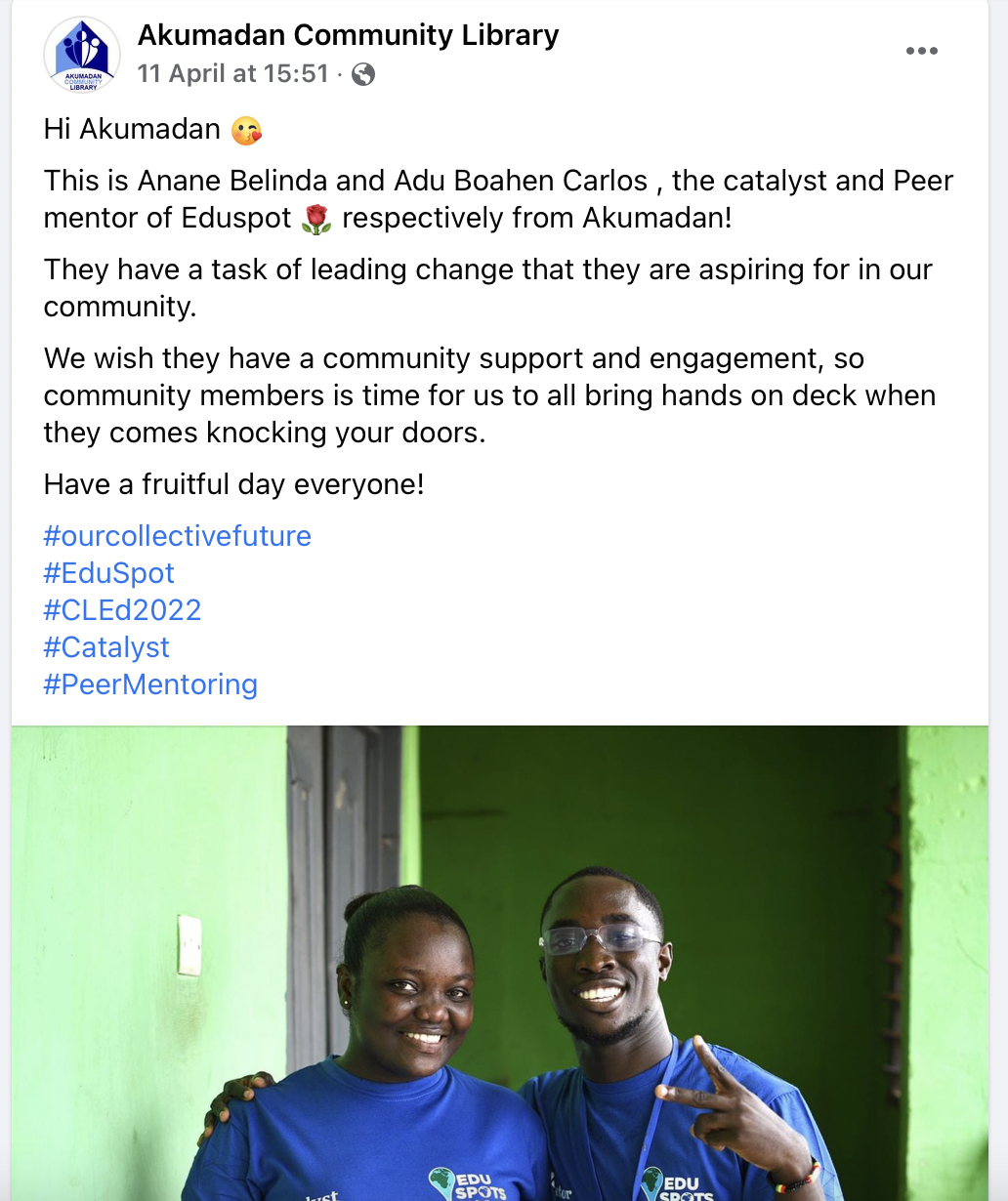
c) Blending online and in person events
Covid has led to a rapid growth in online meet-ups, which has increased the possibility of engaging more deeply with people in diverse locations, opening up access to educational opportunities of various forms.
At EduSpots we have continued the EduZOOM sessions started in the pandemic in the form of Monthly Empowerment talks. We have also held network-wide meet-ups where we gather en masse on Zoom and simply introduce ourselves to others with no purpose other than saying a virtual ‘hello’!
We also use WhatsApp groups extensively, employing a range of strategies to keep the space focused, supportive and ultimately alive with organic collaboration. Communities have their own WhatsApp groups which often replicate the ideas, approach and values communicated on the main feed with registered volunteers. We also have STEM, literacy and leadership hubs for specific content relevant to those fields.

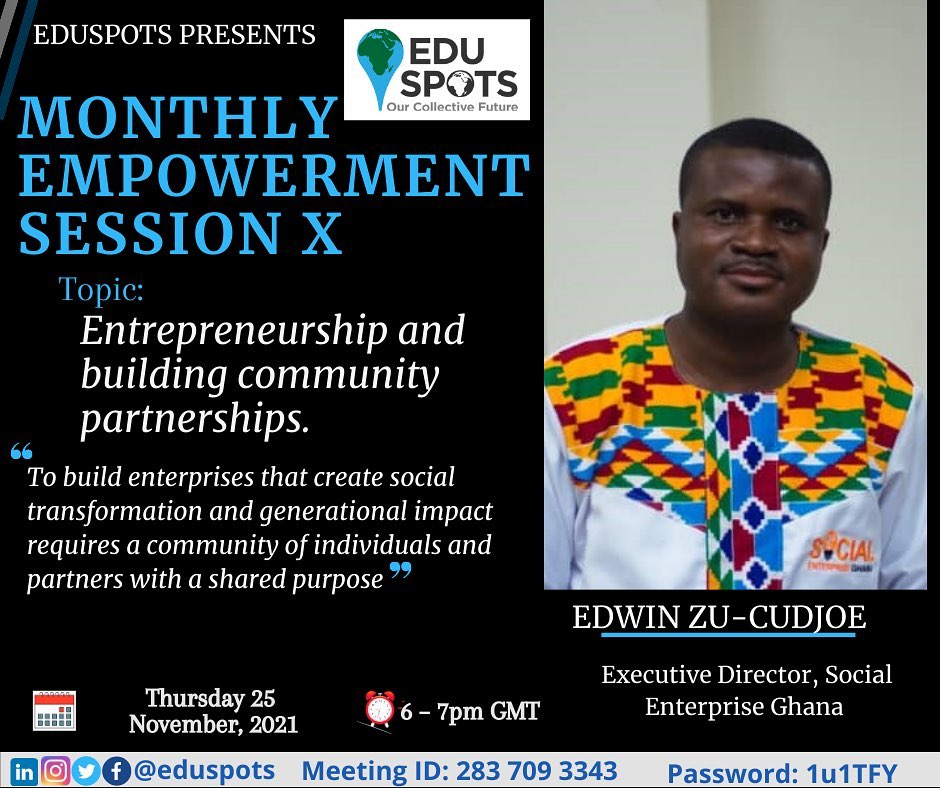
Whilst holding online monthly sessions has opened up access and brought people together, as I’m sure is true for others in the Schools Community Action group, I’m keen to return to in-life conversations where all the individual conversations which occur in between sessions bring additional life, learning and connection.

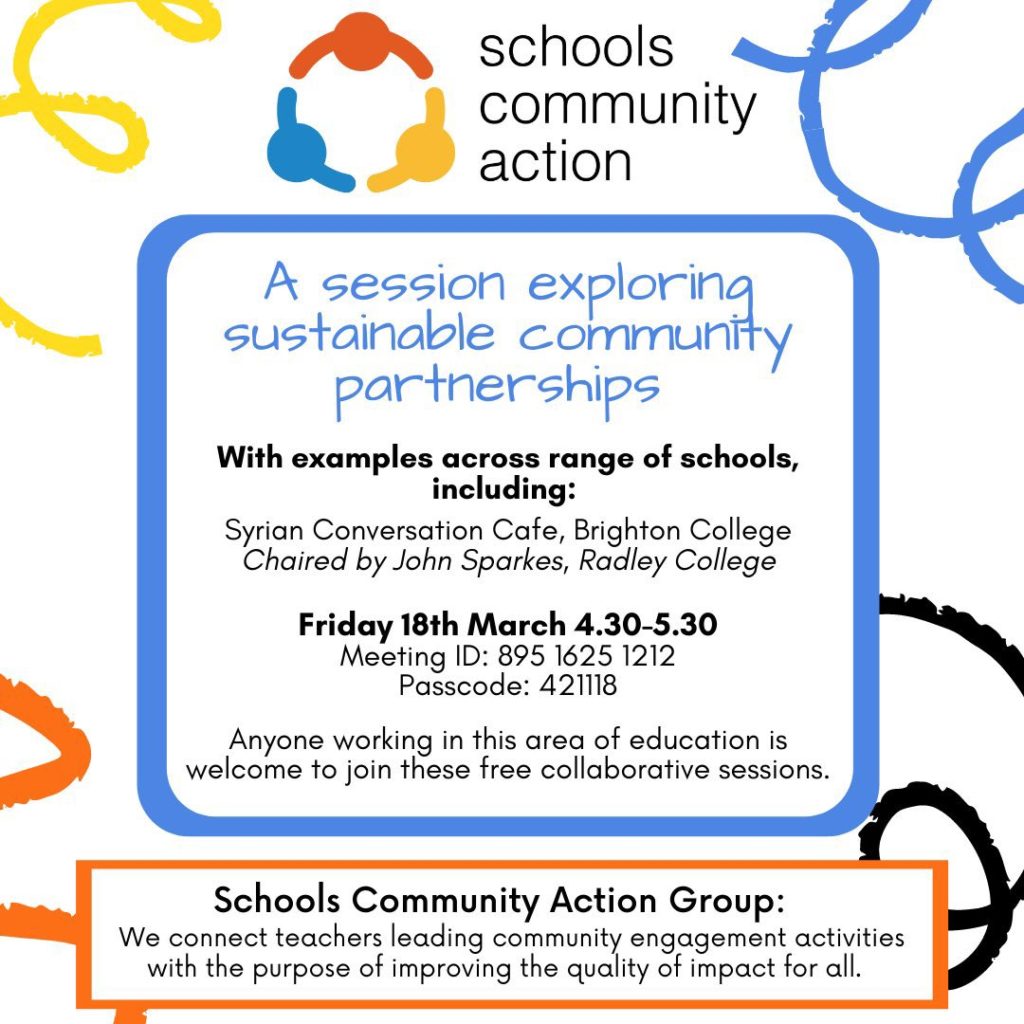
d) Engaging with activities not directly connected to the cause
One EduSpots volunteer highlighted the importance of engaging in social activities which are not obviously connected to the cause: ‘A time out with members will do this. This time around not to meet and discuss work but just to know each other better. Getting out of professional suit and getting to the level of members to eat and chat strengthens the bond. It makes them feel more relaxed around you.’ (Anita, Gomoa Manso)


Linked to this, participants can build personal relationships through direct engagement. This was suggested by Anita in Gomoa Manso: ‘Try calling each other or message privately aside the group platform to check on how other members are doing (both leaders and members).’
d) Celebrating individuals and teams
At EduSpots, we profile our most dynamic and committed volunteers on a monthly basis, with this enabling their work to be recognised and to act as inspiration to others. We also hold annual community awards, usually in person at our annual conference. The communities receive framed certificates for awards such as ‘Spot of the Year’ – these awards have become a surprisingly effective way of motivating communities both to lead change in their communities, and to share what they are doing with the wider network. Communities take the framed certificates back to their Spots where they have become a great source of community pride.



2. Partnerships & sub-groups
Engaging with other organisations which share goals and values can also strengthen a network. At EduSpots, after meeting four Lead for Ghana fellows, I realised that there was a strong natural organisational alignment, with their capstone community projects often taking the form of school libraries with a desire for community-wide engagement in education. Bringing these individuals into our network brought new ideas and energy, and more Lead for Ghana fellows soon joined, but it was important for the wider group not to allow too high a percentage of individuals from another network.
This is partly because one of our strengths as an organisation is that we bring diverse groups of people together in community action, with volunteers of different ages, occupations and educational backgrounds bringing a broad range of perspectives.
It may also be valuable to consider the optimal size of your network, or having clear ‘sub-groups’ within a wider group. I have found that 100 people is the upper limit for a very close-knit network of the type in which everyone is known.
In the Schools Community Action group, we have now created sub-groups in community partnerships, global partnerships, environmental education, school partnerships and social entrepreneurship. After our online sessions, the voice and ideas of network members is captured in posts and wider minutes circulated around the whole group.

3. Collective creation & communication of a vision
Alongside focus on developing relationships, perhaps the most important thing that binds all these things together is the clear communication of a vision, which network members can identify with.
Indeed, Porta and Diani (2020, 123) suggest in their work on social movements that ‘What matters most was a commitment to a particular identity.” Therefore, we need to understand the link between a particular vision we set out.
At EduSpots, we have worked hard on our vision statement: ‘A world in which communities unite to create the worlds they want to see‘ alongside our mission statement of ‘We connect, train and equip local volunteer to drive community-led change through education spaces named Spots’. This combined with our motto #OurCollectiveFuture which features on our logo and most social posts, generates a sense of constant connection amongst the group with our vision and values.
The inclusion of volunteers throughout this animation explaining our approach and vision also adds to the sense of active involvement in the constant creation, re-creation and communication of our network purpose.
4. Creating Opportunities for Voice
We are always actively working on increasingly ensuring volunteers input into and drive our strategic development. When developing any strategy, whether a new programme, EduLit or EduSTEM handbook, or advancing our child protection strategies, we give volunteers spaces for input and set up small working groups. This enables them to see their role at the heart of organisational decision-making.
Linked to this is raising volunteer voice through having their perspective on the organisation at the centre of how we communicate our work. This video is centred around the question ‘Why are you part of EduSpots?’, and this film offers the volunteers’ perspective on the CLEd Academy.
Conclusion
As one volunteer, Ed Warren, one of the original UK student ambassadors for EduSpots put it:
‘It is very important that everyone understands what they are volunteering for and what messages they are conveying locally in line with a wider vision. EduSpots does very well on this with its focus on partnership and ultimately nurturing spaces for collective dialogue.’
Ultimately, every network should be about nurturing a safe space for collective and progressive dialogue. As ever, in the spirit of furthering this dialogue here, I welcome any other further suggestions about strengthening networks in the comments below, alongside any feedback on the ideas shared above.
Year of African Books: If you feel you are benefiting in any sense from the ideas being shared, or simply feel motivated to support EduSpots, please consider a donation to our #YearofAfricanBooks campaign at this link:
https://www.justgiving.com/fundraising/eduspotsafricanbooks
Final Weekly Joy…
I love this version of this famous song, from Wiyaala.


